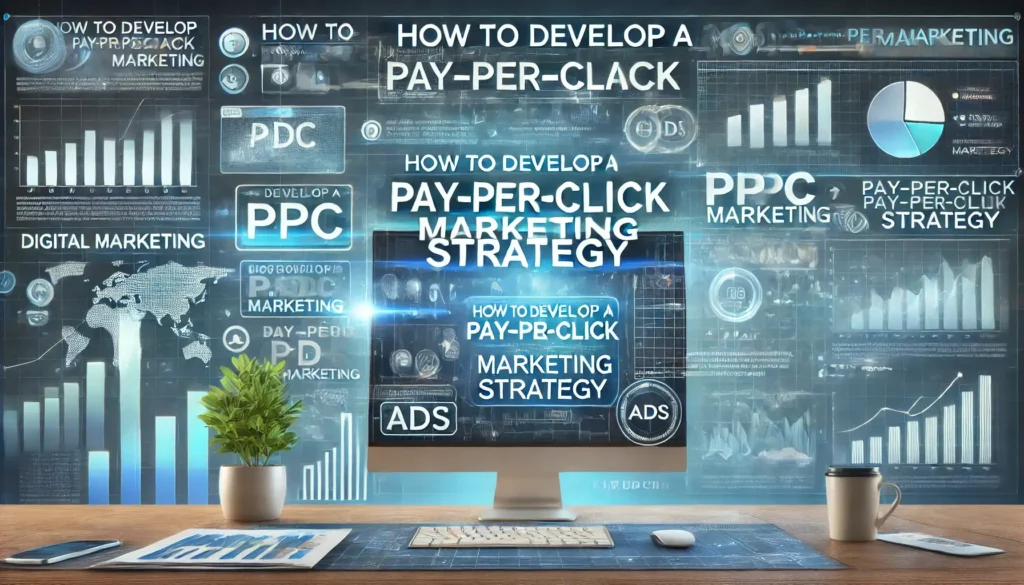Pay Per Click Marketing Strategy – There’s a good reason why businesses spent over $190 billion on digital adverts in 2021. If you place a paid search advert on Google’s Display Network, it has a 200% return on investment (ROI).
With such rich promise, you’re on the right track when considering a PPC strategy for your marketing (PPC campaign). Generating an effective click campaign isn’t easy; that’s why we show you how to develop a fool proof pay per click marketing strategy.
Developing Pay Per Click Marketing Strategies
Developing effective pay per click marketing strategies involves optimizing campaigns to drive targeted traffic and increase ROI. Amazon PPC services can play a crucial role, offering precise targeting and analytics to refine your approach and maximize ad performance.
To reap the maximum benefits from ad rank, follow these tips when developing your pay per click marketing strategy:
1. Set Your Goals
Knowing what to expect from your marketing campaigns will help you track its progress and measure its success. To set realistic goals, note the achievable and challenging goals, identify short-term and long-term goals, and establish a baseline.
Also, focus on the output you expect from each goal, depending on your eCommerce business needs and objectives. Examples of PPC marketing goals include:
- Increasing brand awareness
- Generating leads from landing pages
- Increasing content downloads
- Raising participation in contests
- A target for newsletter sign-ups
- Increasing your conversion rate
2. Identify Your Target Audience
Your target audience is the visitors you want to attract in your digital marketing strategy. Before creating an advert, you need to understand visitors’ demographics, lifestyle, psychology, and how they interact with your brand.
You can achieve that by analysing search queries and search terms on your website or Google Analytics analysis of Google search.
Reaching your audience through PPC advertising will depend on their location, language, and device used. Identifying your target audience helps determine how and where to create effective PPC adverts and budget for them.
3. Check Your Budget
Small businesses and medium-sized enterprises typically spend $9000- $10000 per month on PPC advertising. What you will spend on PPC marketing will depend on:
- The number of potential customers you are targeting
- Type of PPC ads you will use
- Where the provider will post the advert
- Your online advertising tools
Ultimately, your budget will influence your goals, target audience, type of advert, and the advertising platform you will use.
4. Optimize Your Landing Pages
Landing page optimization involves improving and enhancing every element of your landing pages to increase visitors’ conversion rate. Before optimizing your landing pages, identify the problems in the landing pages that have few click-throughs.
Also, track your visitors’ behaviour and apply what has worked on pages with high click-throughs. To optimize your landing pages:
- Restructure them to meet search engine optimization (SEO) standards
- Add testimonials and contact information, such as phone number
- Try exit pop-ups
- Use a straightforward call-to-action button
- Keep your landing pages simple, clear, and consistent
5. Create Catchy Ads
There are different types of content you can create for pay per click advertising. They include video ads, image ads, text ads, display ads, and targeted ads. Implement the following when creating online advertisements:
- Write a powerful message
- Choose your colour theme wisely
- Craft enticing ad copy
- Include motion effects where necessary
- Generate a keyword list to bid on
- Use negative keywords
- Add a call-to-action
- Keep the advert short and sweet
You can use Google AdWords to optimize your extensions, calls-to-action, headlines, and other ad variations automatically.
6. Choose Where to Advertise
If you understand the demographics of your visitors, choosing where to advertise is easy. In this case, focus on where most of your potential customers are likely to interact with your brand. For instance, an SEO company India might help you analyse data and identify effective platforms for reaching your target audience. You can reach your audience through:
- Social media platform advertising, such as LinkedIn and Facebook ads
- Search Engine Results Pages (SERPS) like Bing and Yahoo
- Search Engine Marketing (SEM) such as Google ads and Bing ads
- Microsoft advertising
- Amazon ads
If you have the budget, consider different online platforms for ad placement and ad campaigns, such as Instagram and TikTok.
You can use bidding strategies like search ads targeting certain keyword match types. Alternatively, conduct keyword research to create ad groups for the different products or services.
7. Analyze and Adjust Your PPC Advertising Model
Analyzing your PPC marketing effectiveness helps you understand which advertising strategies are the most valuable. Use Google Analytics or other capable analytical tools to check your marketing goals against the following metrics:
- Click-through rate (CTR)
- On-site engagement
- Cost per acquisition (CPA) for high-performing keywords
- Quality Score for Google AdWords
- Conversion rate
- Return on ad spend (ROAS) against your financial goals
- Cost per click (CPC)
Where necessary, remarket products on adjusted landing pages that performed poorly. You can even employ retargeting for lapsed users.
Final Remarks
While developing a competitive PPC marketing campaign strategy is no walk in the park, it’s not undoable.
You can develop a respectable marketing strategy by settling on a target audience, creating engaging ads, and optimizing your landing pages while tracking and tweaking your PPC marketing strategy.
Pay per click marketing is one of the best ways to advertise, promising a 200% return on investment.



2 Comments
Pingback: How SEO Strategies Can Help To Generate Plumbing Leads
Pingback: Effortlessly Send HTTP Headers Using cURL and Proxies